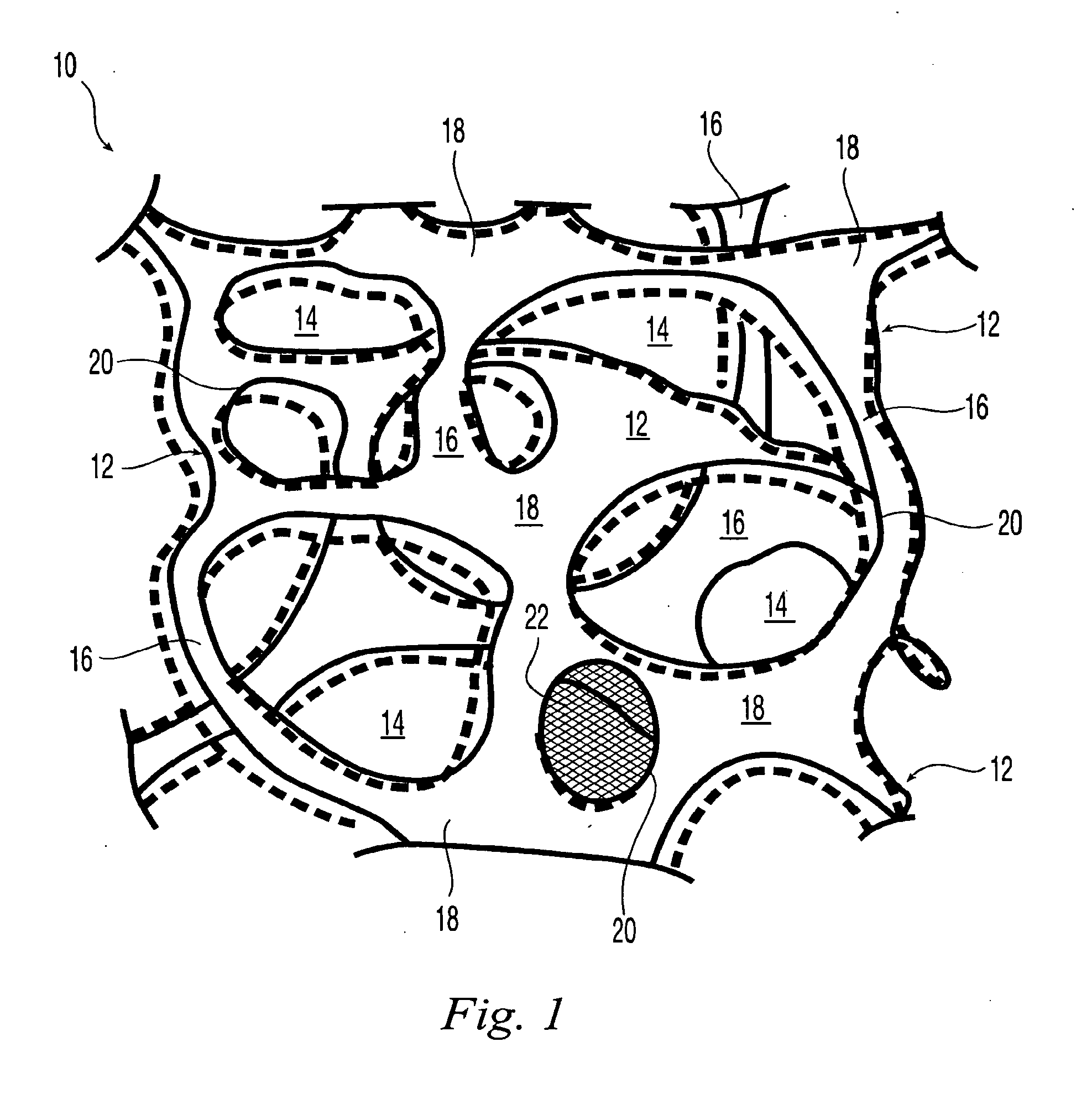Reticulated elastomeric matrices, their manufacture and use in implantable devices
a technology of elastomeric matrices and matrices, which is applied in the field of reticulated elastomeric matrices, can solve the problems of lack of mechanical properties, unattractive known processes, and no known implantable device has been specifically designed or available, and achieves the effects of regaining shape and most of its size, long-term implantation, and sufficient porosity
- Summary
- Abstract
- Description
- Claims
- Application Information
AI Technical Summary
Benefits of technology
Problems solved by technology
Method used
Image
Examples
example 1
Fabrication of a Polycarbonate Polyurethane Matrix by Sacrificial Molding
[0333]As shown in FIG. 4, a substrate was prepared by fusing together particles 80, e.g., under modest temperature and pressure, spherical waxy particles 80 formed of e.g., VYBAR® 260 hydrocarbon polymer obtained from Baker Petrolite (Sugar Land, Tex.). Particles 80 were screened to a relatively narrow diameter distribution, about 3 mm to about 5 mm in diameter, before use. About 20 mL of the screened particles were poured into a transparent 100 mL polypropylene disposable beaker with a perforated bottom, i.e., vessel 82, to provide a compact three-dimensional mass with significant height in the beaker. The beaker was placed into a sealant sleeve attached to a buchner flask which was, in turn, attached to a low-pressure source.
[0334]A pressure of about 3-5 psi (about 2,100-3,500 kg / m2) was applied to wax particles 80 by employing a weight W supported on a load-spreading plate 84 resting on the wax particles so ...
example 2
Fabrication of a Polycarbonate Polyurethane Matrix by Sacrificial Molding
[0340]Example 1 is thrice repeated, each time employing smaller particles, i.e., having average sizes of 1.5, 1 and 0.5 mm, respectively. Results comparable to Example 1 are obtained in each case.
example 3
Fabrication of a Polycarbonate Polyurethane Matrix by Sacrificial Molding Alternative Method
[0341]A solution of BIONATE® 80A in THF was made according to Example 1 except that its concentration was 7% by weight of the polycarbonate polyurethane polymer. As also described in Example 1, VYBAR 260 hydrocarbon polymer particles were used except that the particles were screened to a relatively narrow diameter distribution, about 1 mm to about 2 mm in diameter, before use.
[0342]As described in Example 1, about 20 mL of the 7% polymer solution was poured onto the top layer of the wax particles. However, in this example, the wax particles in the beaker were neither heated nor compressed before being contacted by the solution. A reduced pressure of about 5 inches of mercury was applied to the buchner flask. As soon as the polymer solution was drawn down into the wax particles, an additional 20 mL of particles was poured onto the upper layer of the scaffold and a load-spreading plate slightly...
PUM
 Login to View More
Login to View More Abstract
Description
Claims
Application Information
 Login to View More
Login to View More - R&D
- Intellectual Property
- Life Sciences
- Materials
- Tech Scout
- Unparalleled Data Quality
- Higher Quality Content
- 60% Fewer Hallucinations
Browse by: Latest US Patents, China's latest patents, Technical Efficacy Thesaurus, Application Domain, Technology Topic, Popular Technical Reports.
© 2025 PatSnap. All rights reserved.Legal|Privacy policy|Modern Slavery Act Transparency Statement|Sitemap|About US| Contact US: help@patsnap.com



